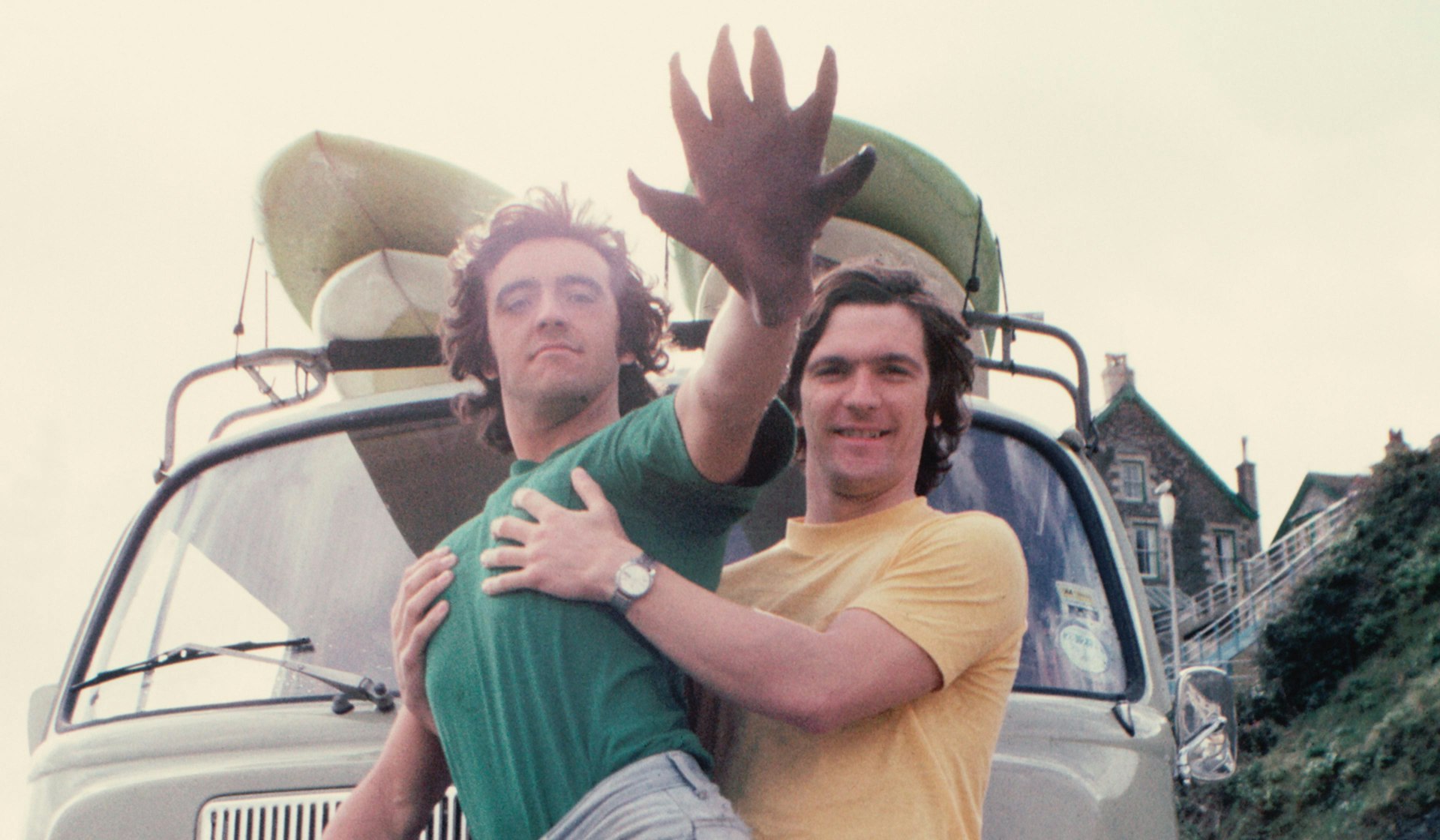
Scotland’s North Shore surfers are cold-water pioneers
- Text by Chris Nelson
- Photography by Andy Bennetts
There are more obvious winter playgrounds here in Northern Scotland than this frozen coast. Take for example, the vast arenas high above sea level, where a multi-coloured mosaic of skiers zig-zag down leeward slopes to waiting lifts. During the dark season, temperatures can drop into the minus twenties on high land, while the lowlands too can feel the cutting edge of the northerly fronts that blow out of the Arctic. Even the Aurora makes a rare appearance, dancing green, blue and purple hues on a few clear cold nights.
The Vikings were warned to avoid Scotland. Though they settled on the outlying islands of the Orkneys and Hebrides, ancient chronicles describe this medieval mainland as an inhospitable and unwelcoming country offering rewards only to the brave, warning that those who venture there may pay with their lives.
But the Vikings did come and the peaty moorlands were stained red from ferocious battles that raged through the centuries. Names like Skirza, Wick and Thurso stand as testament to the settlements that were once established in Scotland’s northernmost county of Caithness. And a distinct Nordic lilt still lingers in the thick, rich accent borne by local tongues.
Kevin Rankin first started surfing the North Shore of Scotland in 1976, ploughing up the A9 into the eye of the storm. “We’d be travelling north with surfboards on the car through sleet and snow,” explains Kevin, “while others would be driving south with skis on their cars.” His first voyage into this new territory was with friends Ian McKay and Frank Paul, “another couple of soul searchers”. It didn’t take long for the new boys to attract attention.
“We got flagged down by a local, Ron Gallagher, who was already surfing up there. One trip and we were hooked. I’ve surfed all over the planet and enjoyed many different adventures, but I have to say nothing comes close to the spirit of Thurso. There’s a certain ‘Celtic magic’ that works its way inside you and never leaves. The people, the countryside, the atmosphere and, of course, the waves.”
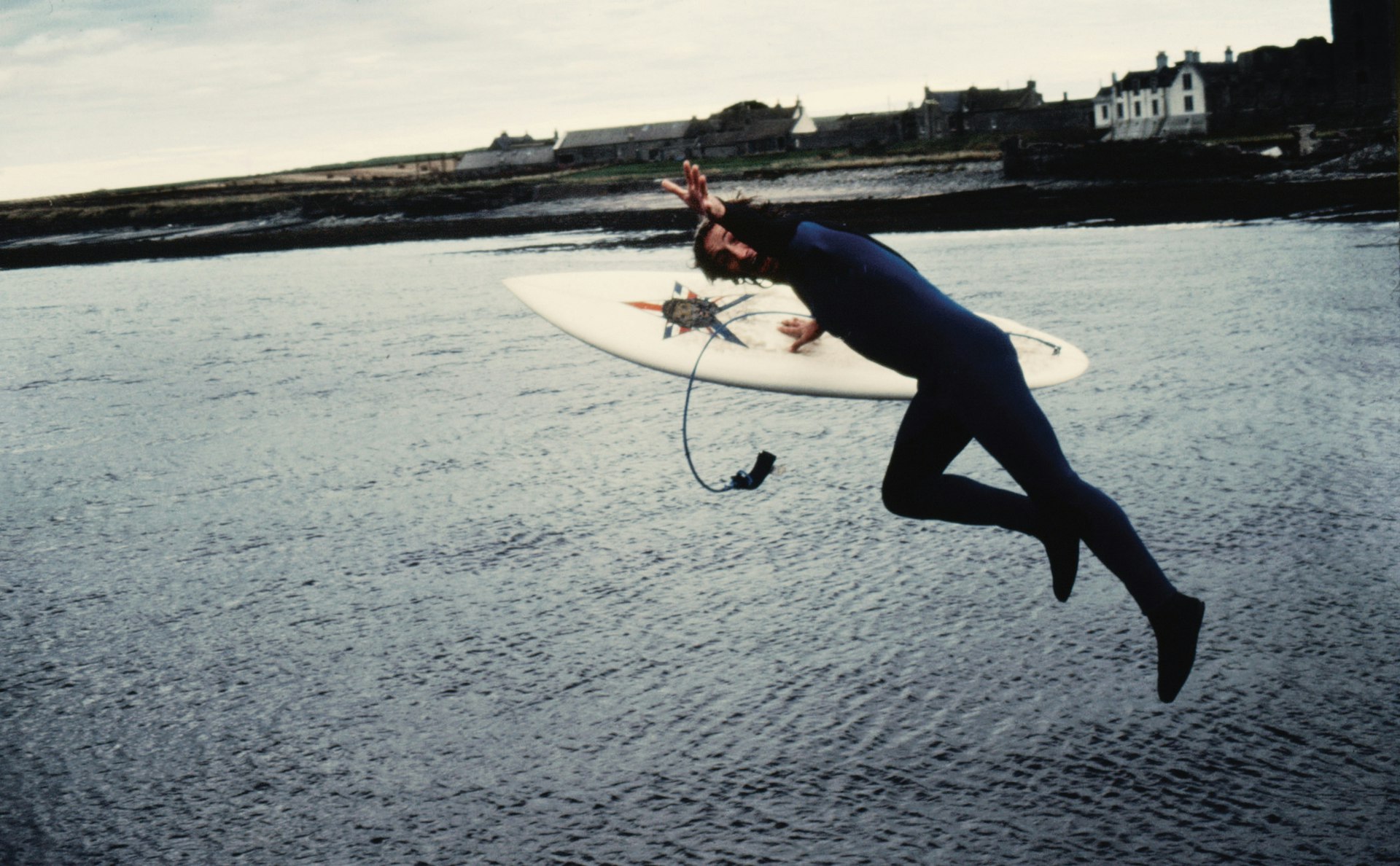
Ian McKay. Photo by Kevin Rankin
By 1979 Kevin was living in a cottage that looked down over Brims Ness, an isolated point to the west of Thurso. Brims is a huge slab of flat rock that arrows out into the North Atlantic. Swell arrives and lunges onto the reef from a huge drop-off into deep water. Even on a day when all the beaches are sleeping, there can be rideable waves at Brims. The Vikings named it well, for it translates as ‘Surf Point’.
“I lived just a kilometre from the famous point, you could see it break from the cottage window,” says Kevin. “In summer, the farmer would often give me a lift down around nine at night on the back of his tractor and I would sit out in the break alone, sometimes ’til midnight.
Some of the most peaceful, content moments I’ve ever felt in life were sitting there, waiting for the next wave to arrive out of a mirror of glass and orange red sky, dissolving into the dusk as the sun set late into the night. Indescribable joy!
What made it more special was that I was the only one there in that moment. You don’t move to a place like Brims Ness to find company. Perhaps it’s about finding yourself. Whatever it was or is, it still haunts me to this day.”
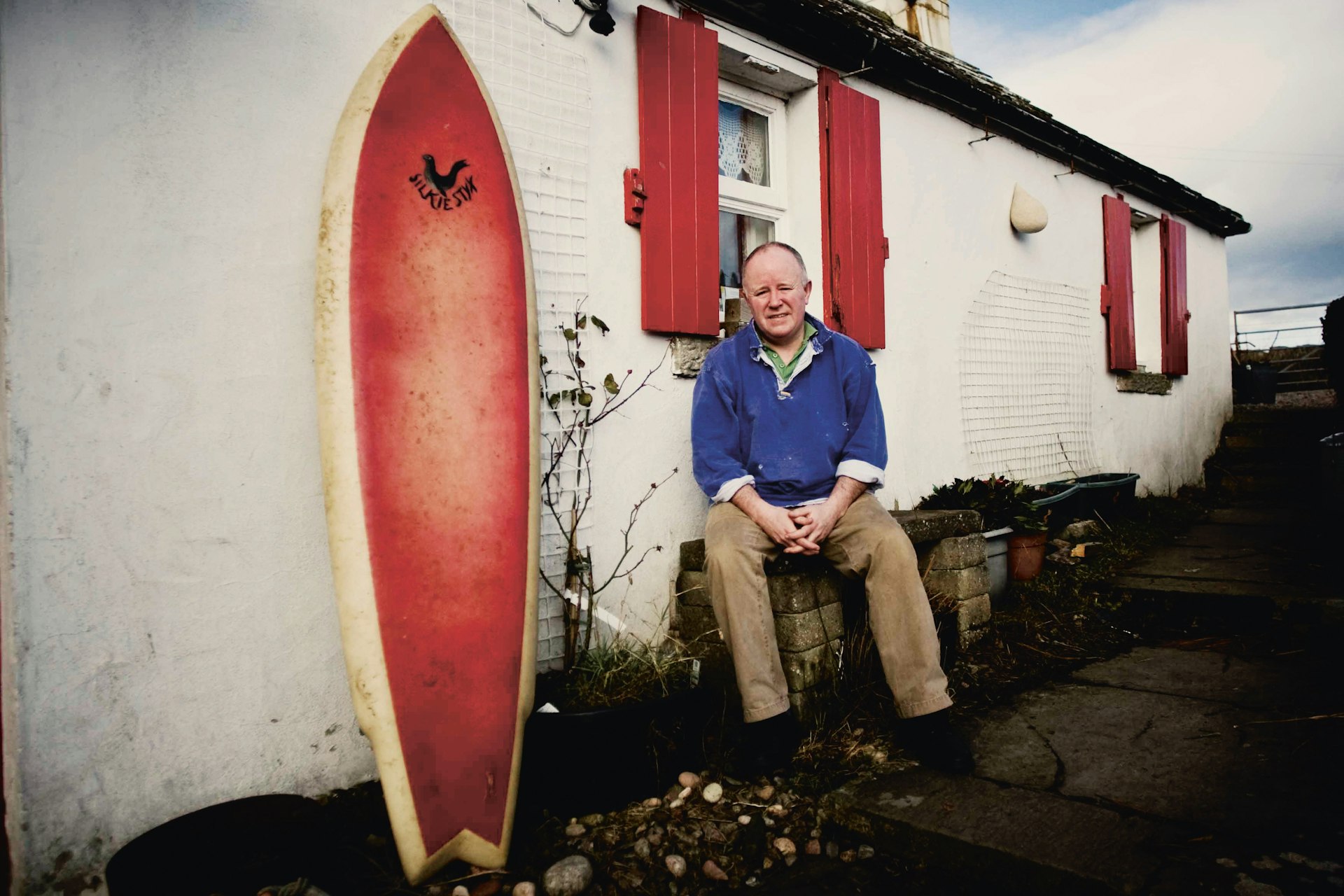
Pat Kieran. Photo by Tim Nunn
The hamlet that overlooks the famous rivermouth break at Thurso East has hosted a series of pivotal tenant surfers, each the epicentre of an era. Pat Kieran was the North Shore’s first real surfing figurehead. Hailing from Liverpool, he spent the late seventies in Farmhouse Cottage.
A decade later Neil Harris resided within the chilly walls of Middle Cottage, pushing boundaries, charging harder. Chris Noble followed, quietly spoken, but chiselled from Scottish granite; he has shown there are still new lines to be drawn on this ancient Celtic wave. Each has painted the canvas with a style defined by the times – single fin lines, open face carves, deep-throat barrel rides.
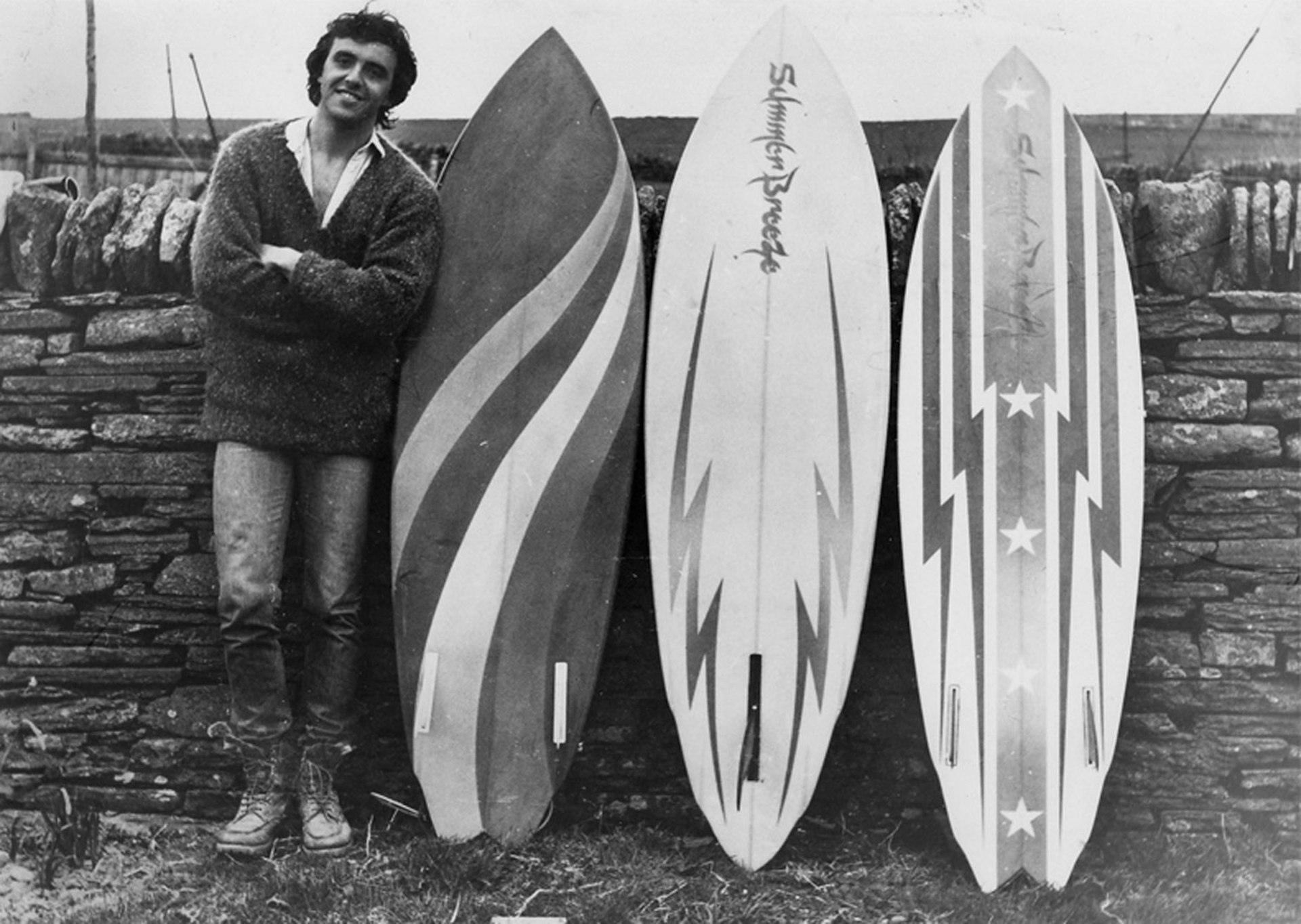
The four houses are part of the estate of Lord Thurso, a local Member of Parliament who called the castle next door his home. “Thurso East was a great place to live,” says Pat. “It was a great community, still is. It’s still got that hippie sort of feeling about it.” Pat’s home was an open house – a place for visiting surfers to crash.
“I’d get mates coming up to stay with me and folk coming up just for the weekend. I never locked the door. I had the place for about three or four years and I never locked the door once. When I moved out, I picked up the key to hand it back to the landlord and it left this big key-shaped hole in the dust.”
Even when Pat was away, the hospitality continued. “I think I was in Liverpool seeing my mother, and I came back to a note on the kitchen table from [British surfer] Nigel Semmens and a couple of other guys from Cornwall. They’d legged it up here, surfed for about four hours, slept in my place. Didn’t ask – didn’t need to. Surfed in the morning, then went back down south and left a note. Fantastic – [they] just came up for a long weekend.”
Today local surfer Alex Sutherland resides here, wetsuits drying on flagstone hearth, keeping the ‘open door, kettle on’ spirit alive.

Christmas 1978, Pat drafted a letter to the Northwest Surf Club in England. He sold the dream of an empty North Shore, offering the promise of ‘a dossing space in a cottage overlooking the break’. It was a call to arms, an open invitation to all newcomers.
“I remember surfing big, classic Thurso East by myself – ten-to-twelve-foot surf, scary. That’s why I thought I could do with a bit of company here. I’d give anybody my floor, because you do that and you meet some great people, and you’ve got some great memories. You learn a lot from other people if you just open yourself up to them.”
Pat looks back at the idea that you’d have to try to encourage people to come surf world-class waves and laughs.
“Today, at Thurso East, I’d say there’s hardly a good wave that goes un-surfed now. There’s always someone in the water if there’s a swell, every day of the week. You certainly couldn’t say that back then. There would be hardly a decent wave that was surfed thirty years ago. Those that were, were surfed by me and a handful of others. It was amazing having this wave to yourself.”
Pat’s role as surfer in residence didn’t just extend to hospitality for visiting surfers. Dounreay, the former nuclear power plant around which the local economy once pivoted, was his nine-to-five, but outside this time he provided boards for any locals he could entice into the water. The barn attached to the cottage became a shaping bay; his spare room was for glassing.
In ancient Celtic lore, the Selkie is a female seal that comes ashore and transforms into a beautiful maiden to take a lover for a night. Pat’s ‘Selkie Styx Surfboards’ carried the Thurso crew out into the line-ups.
“If you go up in the bedroom, you can still see surfboard-shaped resin marks on the floor,” says Pat. “God knows how I got away with it. They should have thrown me out. I took the shaped blanks into the spare bedroom so I could get a bit of temperature to do the resin and fibreglass. I did single fins, a couple of twin fins, and I built a Stinger. Jackie, a girl I was going out with at the time, used to do the artwork for me, things like dragons. This would have been about 1978 or ’79.”
“There’s a certain ‘Celtic magic’ that works its way inside you and never leaves. The people, the countryside, the atmosphere and, of course, the waves.”
If the teachers on playground duty strain their eyes, they might just spot the puffs of smoke emanating from behind the bike sheds. The source of the signals, a fifteen-year-old schoolgirl, is having a sneaky dinnertime cigarette. Peering through the shed’s window, she spots a pile of strange-looking objects stacked at the back – her curiosity is tweaked. She puts her hands up to the glass to shield her eyes and looks again.
“It was 1981, I saw all these bizarre surfboards with fantastic designs like huge dragons across them,” says Sheila Finlayson. “I got all the girls that had been skiing and I said, ‘I found these surfboards, has anybody got a wetsuit?’ I thought, ‘Well we’ve all seen the Old Spice advert, how hard can it be?’
“The boards turned out to be Pat Kieran’s – somehow they’d ended up in the school. We went immediately to Brims Ness, because that’s where the waves were that looked like an Old Spice advert.”
![Left to right: Frank Paul, Kevin Rankin, Sandy Lamont and Pat Kieran. "'Deef Hon' was a rubber glove who lived in the van. Whoever drove the van had to wear him and give hand signals instead of indicating! Deef Hon [Deaf Hand] was so named because he had no ears!" – Kevin Rankin. Photo by Andy Bennetts](https://images.huckmag.com/wp-content/uploads/2016/12/Cornwall-Kev-Pat-Sandy-Frank.jpg?w=1920&q=75)
Left to right: Frank Paul, Kevin Rankin, Sandy Lamont and Pat Kieran.
“‘Deef Hon’ was a rubber glove who lived in the van. Whoever drove the van had to wear him and give hand signals instead of indicating! Deef Hon [Deaf Hand] was so named because he had no ears!” – Kevin Rankin. Photo by Andy Bennetts
Brims: shallow, heavy, treacherous Brims. “We started at the Point first. We went, ‘That’s a nice big wave. That’s got a big tubey thing, let’s have a crack at that. Ah, shit – that’s quite difficult.’ We weren’t very successful really, but because we were young we didn’t break, although we basically got pummelled.
Then we tried Thurso East and that was not good, so we kind of sussed out that we needed smaller, gentler waves. We started going out west probably every weekend and maybe once or twice a week. After about three months we all started standing up – with a very unique style. Farr Bay, that’s where I remember going the most, because it is such a nice shallow, gentle beach.”
A lack of equipment wasn’t going to hold the girls back. “We started out without gloves or boots,” explains Sheila. “Our wetsuits didn’t even fit. We had verruca socks and washing-up gloves to try and keep the cold out – very gorgeous. It worked a bit – worked better than nothing.”
It was only their uncompromising drive and sheer determination that got them past mere playground bravado and out into the water. “We thought it was a girl’s sport. When we went to Cornwall we got such a shock. We thought, ‘Where are the girls? It’s so effeminate down here.’”
That chance discovery gave Sheila a life-long love of the glide. Today she still manages to get in the water every week, sometimes two or three times. “Eventually, after a couple of years I managed to win the Scottish Champs. I think it’s nine or ten titles now,” she says, almost embarrassed. “I do enjoy competing and it encourages me to surf a little bit better.”
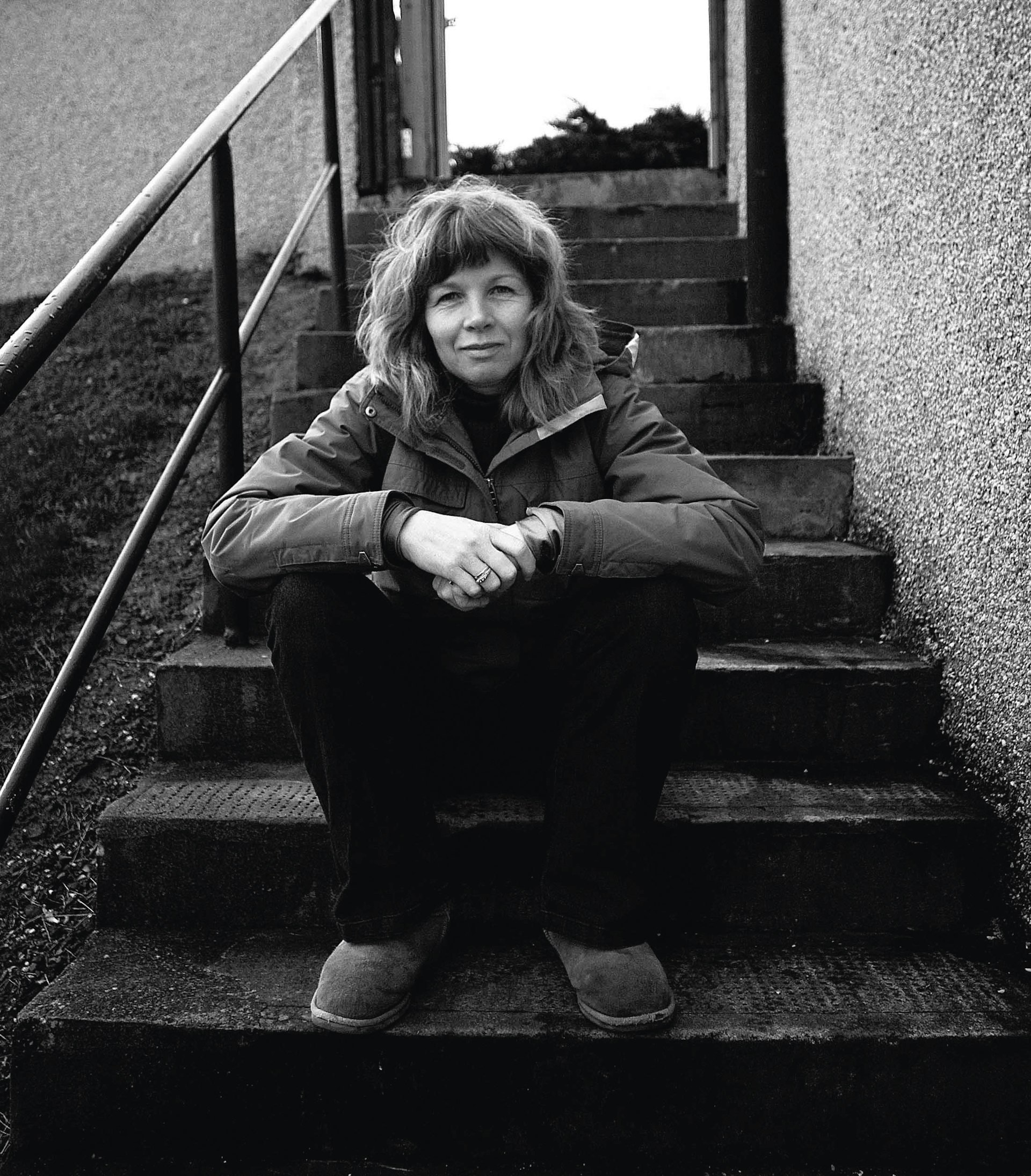
Sheila Finlayson. Photo by Tim Nunn
Today Sheila passes on that surfing stoke to local grommets. Whether it’s taking them along on a run out to the beaches, allowing them to store boards in her shed near the break or offering words of advice and encouragement, Sheila sees surfing as something that could be a real positive force for local disenchanted youth.
“There’re lots of kids kicking about a bit bored. Lots of, I don’t know, aggression and adrenaline-seeking tendencies,” she says. “All they need to do is get in the water, that’ll give them plenty. They don’t really access it. I think that’s a shame.
“If this was down in Cornwall, it’d be mobbed. I know that some other people feel differently and want to protect their waves, but I’m personally supportive of getting more youngsters into the water. I think I had so much fun with it that it’d be nice to share that with other kids.”
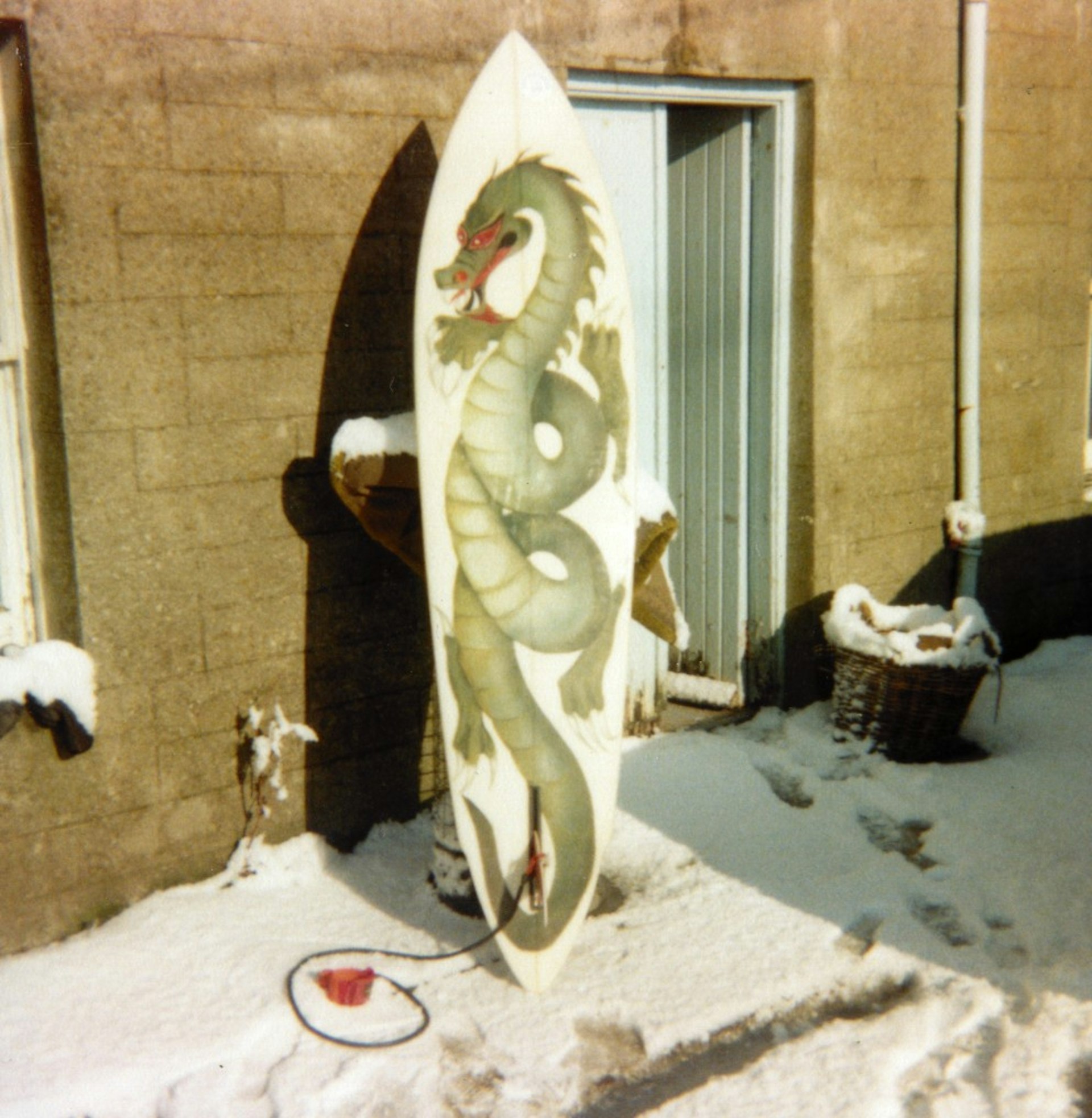
Pat Kieran hoists down a board from the wall of his cottage near Dounreay. It is a twin fin, thick with boxy rails, shaped in the barn, glassed in the bedroom, ridden on the wave. Pat is the common thread woven through the fabric of surf culture here in the extreme north east of Scotland.
First surfer in residence, he shaped boards for those who wanted to take to the sea, the same boards found by Sheila Finlayson. He encouraged grommets through the local surf club, donating his time, sharing his stoke, giving lessons and lifts to the beach.
The fabric and history here would have been of a different weave if Pat had headed to the waves of Devon instead of Caithness, when he decided to leave his home city of Liverpool.
“Once I’d been here and surfed this wave, it really was exactly like [how] I described it at the time – it was like an elastic band. The further I got away from Caithness and that wave, to be honest, the tighter that band got, the more determined I was to get back.”
Extracted from Cold Water Souls: In Search of Surfing’s Cold Water Pioneers. When author Chris Nelson travelled to Nova Scotia for a story that ran in the very first issue of Huck, he became transfixed with the characters that inhabit the world’s most frigid shores. He’s ventured to Iceland, Vancouver Island, Alaska, Hokkaido and many icy breaks beyond in search of similar pioneers. The resulting book is an exploration of surfing’s final frontiers.
This article first appeared in Huck 24 – The Rob Machado Issue. Subscribe to Huck today to make sure you never miss another issue.
Enjoyed this article? Like Huck on Facebook or follow us on Twitter.
